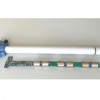 Several methods of irrigation scheduling are used by producers, including the feel method, calendar method, soil water balance method, and soil moisture measurement method. The latter two methods are superior and help avoid too much or too little irrigation, because they consider the water storage within the plant root zone. The soil moisture method commonly involves measuring soil moisture in the root zone and irrigating when the soil moisture falls below 33% or 50% depletion of available water capacity (water in soil that is available to the plant). This 6-page fact sheet was written by Sanjay Shukla and Nathan Holt, and published by the UF Department of Agricultural and Biological Engineering, July 2014.
Several methods of irrigation scheduling are used by producers, including the feel method, calendar method, soil water balance method, and soil moisture measurement method. The latter two methods are superior and help avoid too much or too little irrigation, because they consider the water storage within the plant root zone. The soil moisture method commonly involves measuring soil moisture in the root zone and irrigating when the soil moisture falls below 33% or 50% depletion of available water capacity (water in soil that is available to the plant). This 6-page fact sheet was written by Sanjay Shukla and Nathan Holt, and published by the UF Department of Agricultural and Biological Engineering, July 2014.
http://edis.ifas.ufl.edu/ae505
Category: Crops
Interpreting Dye Test Results for Improved Drip Irrigation Management for the Mulched Vegetable-Production Systems in South Florida
 With Florida’s water withdrawals expected to increase by 30% from 2000 to 2030, South Florida vegetable producers are conserving water by converting traditional seepage irrigation systems to drip irrigation, which can have up to 90% efficiency when used effectively. Dye tests can provide important information for implementing a proper drip irrigation management program. This 6-page fact sheet was written by Sanjay Shukla, Nathan Holt, and Gregory Hendricks, and published by the UF Department of Agricultural and Biological Engineering, July 2014.
With Florida’s water withdrawals expected to increase by 30% from 2000 to 2030, South Florida vegetable producers are conserving water by converting traditional seepage irrigation systems to drip irrigation, which can have up to 90% efficiency when used effectively. Dye tests can provide important information for implementing a proper drip irrigation management program. This 6-page fact sheet was written by Sanjay Shukla, Nathan Holt, and Gregory Hendricks, and published by the UF Department of Agricultural and Biological Engineering, July 2014.
http://edis.ifas.ufl.edu/ae506
Management of Powdery Mildew in Beans
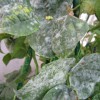 Powdery mildew is one of the most commonly occurring diseases on many types of beans. Although the causal organism rarely causes extensive damage, significant yield losses were reported in Columbia County when infection occurred in dry beans prior to flowering. Accurately identifying this disease and immediately taking action for control are critical to effectively prevent spread of powdery mildew in order to reduce significant losses of yield and quality. This 4-page fact sheet was written by Qingren Wang, Shouan Zhang, and Teresa Olczyk, and published by the UF Department of Plant Pathology, June 2014.
Powdery mildew is one of the most commonly occurring diseases on many types of beans. Although the causal organism rarely causes extensive damage, significant yield losses were reported in Columbia County when infection occurred in dry beans prior to flowering. Accurately identifying this disease and immediately taking action for control are critical to effectively prevent spread of powdery mildew in order to reduce significant losses of yield and quality. This 4-page fact sheet was written by Qingren Wang, Shouan Zhang, and Teresa Olczyk, and published by the UF Department of Plant Pathology, June 2014.
http://edis.ifas.ufl.edu/pp311
Bagrada Bug, Painted Bug, Bagrada Hilaris (Burmeister) (Insecta: Hemiptera: Pentatomidae)
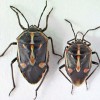 The bagrada bug is a pest of concern to Florida agriculture, and there are several similar species with which it may be confused. Bagrada bugs have been detected on plant material in trucks traveling across state borders. Twelve interceptions have been made from 2011-2013 at the FDACS agricultural inspection stations along the interstate at the Florida border. Due to the number of recent interceptions, and the ability of this pest to feed on many plants, the bagrada bug has potential to establish in Florida. Therefore, monitoring, surveillance, and educational efforts have begun in Florida to facilitate early detection and rapid response as the spread of the bagrada bug continues to other areas. This 7-page fact sheet was written by Eric LeVeen and Amanda C. Hodges, and published by the UF Department of Entomology and Nematology, July 2014.
The bagrada bug is a pest of concern to Florida agriculture, and there are several similar species with which it may be confused. Bagrada bugs have been detected on plant material in trucks traveling across state borders. Twelve interceptions have been made from 2011-2013 at the FDACS agricultural inspection stations along the interstate at the Florida border. Due to the number of recent interceptions, and the ability of this pest to feed on many plants, the bagrada bug has potential to establish in Florida. Therefore, monitoring, surveillance, and educational efforts have begun in Florida to facilitate early detection and rapid response as the spread of the bagrada bug continues to other areas. This 7-page fact sheet was written by Eric LeVeen and Amanda C. Hodges, and published by the UF Department of Entomology and Nematology, July 2014.
http://edis.ifas.ufl.edu/in1041
Bermudagrass Stem Maggot: A New Pest in Florida
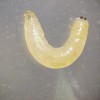 Bermudagrass is a dominant hay crop in Florida. Now, hay producers are facing a new emerging pest problem in bermudagrass and stargrass production fields. The bermudagrass stem maggot, is a new exotic invasive fly. It was first discovered damaging bermudagrass pasture and hay fields in Georgia. The identification of the fly was the first record of this species in North America, and it has the potential to become a serious pest of bermudagrass and stargrass in Florida. This 2-page fact sheet was written by Ann Blount, Tim Wilson, Jay Ferrell, Russ Mizell, and Jonael Bosques, and published by the UF Department of Agronomy, June 2014.
Bermudagrass is a dominant hay crop in Florida. Now, hay producers are facing a new emerging pest problem in bermudagrass and stargrass production fields. The bermudagrass stem maggot, is a new exotic invasive fly. It was first discovered damaging bermudagrass pasture and hay fields in Georgia. The identification of the fly was the first record of this species in North America, and it has the potential to become a serious pest of bermudagrass and stargrass in Florida. This 2-page fact sheet was written by Ann Blount, Tim Wilson, Jay Ferrell, Russ Mizell, and Jonael Bosques, and published by the UF Department of Agronomy, June 2014.
http://edis.ifas.ufl.edu/ag384
Biology and Management of Common Purslane in Fruiting Vegetables, Cucurbits, and Strawberries
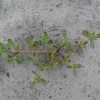 Purslane occurs throughout the year in Florida. It produces thousands of seeds per plant, which germinate readily, but can also persist in the soil for up to 15 years. Vegetative shoot fragments can survive on the soil surface for extended periods of time, then re-root when exposed to moisture and can even flower and produce seeds after they have been pulled from the soil. This characteristic enables purslane to persist and spread following cultivation. This 4-page fact sheet was written by Nathan S. Boyd, Andrew W. MacRae, Rick Kelly, and Ixchel M. Hernandez, and published by the UF Department of Horticultural Sciences, July 2014.
Purslane occurs throughout the year in Florida. It produces thousands of seeds per plant, which germinate readily, but can also persist in the soil for up to 15 years. Vegetative shoot fragments can survive on the soil surface for extended periods of time, then re-root when exposed to moisture and can even flower and produce seeds after they have been pulled from the soil. This characteristic enables purslane to persist and spread following cultivation. This 4-page fact sheet was written by Nathan S. Boyd, Andrew W. MacRae, Rick Kelly, and Ixchel M. Hernandez, and published by the UF Department of Horticultural Sciences, July 2014.
http://edis.ifas.ufl.edu/hs1238
BMP-Recommended Water and Phosphorus Inputs for Tomato and Watermelon Can Reduce Environmental Losses of Phosphorus and Save Water
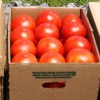 A BMP study was conducted at the research farm of the UF/IFAS Southwest Florida Research and Education Center in Immokalee, FL. The study evaluated two production systems made up of two levels of water and fertilizer inputs for tomato and watermelon production with seepage irrigation. The average water and P fertilizer rates used by growers in south Florida were contrasted with the recommended BMP rates. Applying BMP-recommended water and phosphorus (P) inputs for seepage-irrigated tomato and watermelon in Florida can reduce water use and P leaching to groundwater without adversely impacting fruit yield. However, given the adverse impacts on watermelon yield due to lower than sufficient levels of K, further research is needed to evaluate the fertilizer recommendations for watermelon, especially K2O rates, to ensure economic viability of farms. Our results showed that adoption of BMP-recommended P rates as a BMP did not reduce crop yield and improved water quality. This 4-page fact sheet was written by Sanjay Shukla, Gregory S. Hendricks, Thomas A. Obreza, and Willie G. Harris, and published by the UF Department of Agricultural and Biological Engineering, June 2014.
A BMP study was conducted at the research farm of the UF/IFAS Southwest Florida Research and Education Center in Immokalee, FL. The study evaluated two production systems made up of two levels of water and fertilizer inputs for tomato and watermelon production with seepage irrigation. The average water and P fertilizer rates used by growers in south Florida were contrasted with the recommended BMP rates. Applying BMP-recommended water and phosphorus (P) inputs for seepage-irrigated tomato and watermelon in Florida can reduce water use and P leaching to groundwater without adversely impacting fruit yield. However, given the adverse impacts on watermelon yield due to lower than sufficient levels of K, further research is needed to evaluate the fertilizer recommendations for watermelon, especially K2O rates, to ensure economic viability of farms. Our results showed that adoption of BMP-recommended P rates as a BMP did not reduce crop yield and improved water quality. This 4-page fact sheet was written by Sanjay Shukla, Gregory S. Hendricks, Thomas A. Obreza, and Willie G. Harris, and published by the UF Department of Agricultural and Biological Engineering, June 2014.
http://edis.ifas.ufl.edu/ae504
Water and Nitrogen BMPs for Tomato and Watermelon: Water Quality and Economics
 Results of a two-year, four-crop-cycles experiment indicated that the recommended Best Management Practice (BMP) water and fertilizer nitrogen (N) rates for seepage-irrigated tomato in south Florida can reduce water use and N leaching to groundwater without adversely impacting yield. The same is true for watermelon for average rainfall conditions. This 5-page fact sheet was written by Sanjay Shukla, Gregory S. Hendricks, Fritz M. Roka, and Thomas A. Obreza, and published by the UF Department of Agricultural and Biological Engineering, May 2014.
Results of a two-year, four-crop-cycles experiment indicated that the recommended Best Management Practice (BMP) water and fertilizer nitrogen (N) rates for seepage-irrigated tomato in south Florida can reduce water use and N leaching to groundwater without adversely impacting yield. The same is true for watermelon for average rainfall conditions. This 5-page fact sheet was written by Sanjay Shukla, Gregory S. Hendricks, Fritz M. Roka, and Thomas A. Obreza, and published by the UF Department of Agricultural and Biological Engineering, May 2014.
http://edis.ifas.ufl.edu/ae503
Soil pH Management for Optimum Commercial Fruit Production in Florida
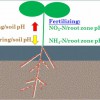 Soil pH is one of the most important soil chemical properties and affects nutrient bioavailability and microbial activity. The purpose of this article is to provide an overview for faculty, crop consultants, crop advisors, fruit growers, and students who are interested in fruit production. The crop response to soil pH varies due to crop genetic diversity. Soil pH determines nutrient bioavailability and hence fruit growth, yield, and quality. This 6-page fact sheet was written by Guodong Liu, Rao Mylavarapu, Ed Hanlon, and Wei Chieh Lee, and published by the UF Department of Horticultural Sciences, April 2014.
Soil pH is one of the most important soil chemical properties and affects nutrient bioavailability and microbial activity. The purpose of this article is to provide an overview for faculty, crop consultants, crop advisors, fruit growers, and students who are interested in fruit production. The crop response to soil pH varies due to crop genetic diversity. Soil pH determines nutrient bioavailability and hence fruit growth, yield, and quality. This 6-page fact sheet was written by Guodong Liu, Rao Mylavarapu, Ed Hanlon, and Wei Chieh Lee, and published by the UF Department of Horticultural Sciences, April 2014.
http://edis.ifas.ufl.edu/hs1234
How to Determine Run Time and Irrigation Cycles for Drip Irrigation: Tomato and Pepper Examples
 Even though drip irrigation is more efficient than the other irrigation methods, proper system management is crucial if that increased efficiency is going to result in water savings and a viable crop. One important aspect of drip irrigation management for crop success is irrigation scheduling, which includes determining both how much and when to irrigate. The grower can use several different methods to help develop a suitable irrigation schedule. Proper scheduling needs to be implemented to take full advantage of the increased drip irrigation efficiency. Two examples are presented in this 5-page fact sheet for tomatoes and peppers, which are two important vegetable crops in Florida, to demonstrate the use of reference evapotranspiration and crop coefficients in developing a drip irrigation schedule. Written by Sanjay Shukla, James M. Knowles, and Niroj K. Shrestha, and published by the UF Department of Agricultural and Biological Engineering, April 2014.
Even though drip irrigation is more efficient than the other irrigation methods, proper system management is crucial if that increased efficiency is going to result in water savings and a viable crop. One important aspect of drip irrigation management for crop success is irrigation scheduling, which includes determining both how much and when to irrigate. The grower can use several different methods to help develop a suitable irrigation schedule. Proper scheduling needs to be implemented to take full advantage of the increased drip irrigation efficiency. Two examples are presented in this 5-page fact sheet for tomatoes and peppers, which are two important vegetable crops in Florida, to demonstrate the use of reference evapotranspiration and crop coefficients in developing a drip irrigation schedule. Written by Sanjay Shukla, James M. Knowles, and Niroj K. Shrestha, and published by the UF Department of Agricultural and Biological Engineering, April 2014.
http://edis.ifas.ufl.edu/ae500
Bush Snapbean Production in Miami-Dade County, Florida
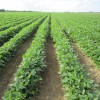 Miami-Dade County is the primary production region for fresh-market bush snapbeans with 57% or 18,696 acres of the Florida bean acreage. Production costs vary from $16.53 to $21.87 per 30 lb. bushel or $4,046 to $4,711 per acre. Acceptable yields range from 185 to over 300 bushels per acre. Snapbeans produced in Miami-Dade County are sold nationwide for the fresh market starting just before Thanksgiving and continuing through the winter and spring months. This 9-page fact sheet was written by S. Zhang, D. Seal, M. Ozores-Hampton, M. Lamberts, Y. Li, W. Klassen, and T. Olczyk, specifically for growers in Miami-Dade County as a supplement to The Vegetable Production Handbook for Florida (SP170). Published by the UF Department of Horticultural Sciences, July 2014.
Miami-Dade County is the primary production region for fresh-market bush snapbeans with 57% or 18,696 acres of the Florida bean acreage. Production costs vary from $16.53 to $21.87 per 30 lb. bushel or $4,046 to $4,711 per acre. Acceptable yields range from 185 to over 300 bushels per acre. Snapbeans produced in Miami-Dade County are sold nationwide for the fresh market starting just before Thanksgiving and continuing through the winter and spring months. This 9-page fact sheet was written by S. Zhang, D. Seal, M. Ozores-Hampton, M. Lamberts, Y. Li, W. Klassen, and T. Olczyk, specifically for growers in Miami-Dade County as a supplement to The Vegetable Production Handbook for Florida (SP170). Published by the UF Department of Horticultural Sciences, July 2014.
http://edis.ifas.ufl.edu/tr005
2013 Evaluation of In-Furrow and Foliar Fungicides for Disease Control in Peanut in Jay, Florida
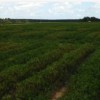 This 10-page fact sheet summarizes the 2013 in-furrow and foliar fungicide programs for control of early and late leaf spot and white mold (southern stem rot) of peanut in Jay, Florida. It shows the effectiveness of 13 fungicide programs for disease control, as compared to no treatment. This data represents only one year and one location, and readers are cautioned that test results should be considered over several locations and years before final conclusions are valid. Written by Darcy E. P. Telenko, John Atkins, and Nick Dufault, and published by the UF Department of Plant Pathology, January 2014.
This 10-page fact sheet summarizes the 2013 in-furrow and foliar fungicide programs for control of early and late leaf spot and white mold (southern stem rot) of peanut in Jay, Florida. It shows the effectiveness of 13 fungicide programs for disease control, as compared to no treatment. This data represents only one year and one location, and readers are cautioned that test results should be considered over several locations and years before final conclusions are valid. Written by Darcy E. P. Telenko, John Atkins, and Nick Dufault, and published by the UF Department of Plant Pathology, January 2014.
http://edis.ifas.ufl.edu/pp310
Southern Highbush Blueberry Cultivars from the University of Florida
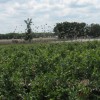 Many improved southern highbush cultivars have been developed by the University of Florida breeding program since the initial releases of ‘Sharpblue’, ‘Flordablue’, and ‘Avonblue’ in the mid-1970s. Today there are more blueberry cultivar choices available for Florida growers than ever before, but in every case, cultivar selection involves weighing the advantages and disadvantages of a cultivar relative to the grower’s needs. Unfortunately, there are no perfect cultivars suited for every location and management system. This 10-page fact sheet categorizes southern highbush cultivars into four groups: major cultivars, secondary cultivars, new options, and historical cultivars. Proper cultivar selection is critical to a successful blueberry enterprise, and growers should seek information from multiple sources, including their local county Extension office. Written by J.G. Williamson, J.W. Olmstead, G.K. England, and P.M. Lyrene, and published by the UF Department of Horticultural Sciences, April 2014.
Many improved southern highbush cultivars have been developed by the University of Florida breeding program since the initial releases of ‘Sharpblue’, ‘Flordablue’, and ‘Avonblue’ in the mid-1970s. Today there are more blueberry cultivar choices available for Florida growers than ever before, but in every case, cultivar selection involves weighing the advantages and disadvantages of a cultivar relative to the grower’s needs. Unfortunately, there are no perfect cultivars suited for every location and management system. This 10-page fact sheet categorizes southern highbush cultivars into four groups: major cultivars, secondary cultivars, new options, and historical cultivars. Proper cultivar selection is critical to a successful blueberry enterprise, and growers should seek information from multiple sources, including their local county Extension office. Written by J.G. Williamson, J.W. Olmstead, G.K. England, and P.M. Lyrene, and published by the UF Department of Horticultural Sciences, April 2014.
http://edis.ifas.ufl.edu/hs1245
Heirloom Hot Pepper Varieties for Florida
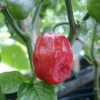 Here is a guide of the popular pepper varieties used in Florida. The popularity was assessed from a survey among seed suppliers, which include Baker Creek Heirloom Seeds, Burpee, High Mowing Seeds, Southern Exposure Seed Exchange, Tomato Grower Supply Company, Seeds of Change, Territorial Seed Company, and My Patriot Supply. When organic seeds were available, the USDA logo was inserted. The relative Scoville rating, which measures a pepper’s pungency, was also included when it was available. This 15-page fact sheet was written by Monica Ozores-Hampton, and published by the UF Department of Horticultural Sciences, November 2014.
Here is a guide of the popular pepper varieties used in Florida. The popularity was assessed from a survey among seed suppliers, which include Baker Creek Heirloom Seeds, Burpee, High Mowing Seeds, Southern Exposure Seed Exchange, Tomato Grower Supply Company, Seeds of Change, Territorial Seed Company, and My Patriot Supply. When organic seeds were available, the USDA logo was inserted. The relative Scoville rating, which measures a pepper’s pungency, was also included when it was available. This 15-page fact sheet was written by Monica Ozores-Hampton, and published by the UF Department of Horticultural Sciences, November 2014.
http://edis.ifas.ufl.edu/hs1244
2013 Sweet Corn Variety Performance Trial, Jay, Florida
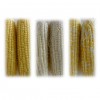 This 5-page fact sheet summarizes the 2013 sweet corn variety trial at the UF West Florida Research and Education Center Jay Research farm in Jay, Florida. It shows the performance of fifteen commercial and experimental Sh2 (supersweet) sweet corn varieties. This data only represents one year and one location; test results should be considered over several years and locations before final conclusions are valid. Written by Darcy Telenko, Libby Johnson, and William Wendt, and published by the UF Department of Horticultural Sciences, November 2014.
This 5-page fact sheet summarizes the 2013 sweet corn variety trial at the UF West Florida Research and Education Center Jay Research farm in Jay, Florida. It shows the performance of fifteen commercial and experimental Sh2 (supersweet) sweet corn varieties. This data only represents one year and one location; test results should be considered over several years and locations before final conclusions are valid. Written by Darcy Telenko, Libby Johnson, and William Wendt, and published by the UF Department of Horticultural Sciences, November 2014.
http://edis.ifas.ufl.edu/hs1236
Introduction to Organic Crop Production
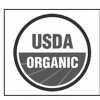 Organic farming can generally be described as a method of production that utilizes non-synthetic inputs and emphasizes biological and ecological process to improve soil quality, manage soil fertility, and optimize pest management. This 16-page fact sheet is written for commercial producers who are transitioning to or beginning organic production. Written by D.D. Treadwell, and published by the UF Department of Horticultural Sciences, April 2014.
Organic farming can generally be described as a method of production that utilizes non-synthetic inputs and emphasizes biological and ecological process to improve soil quality, manage soil fertility, and optimize pest management. This 16-page fact sheet is written for commercial producers who are transitioning to or beginning organic production. Written by D.D. Treadwell, and published by the UF Department of Horticultural Sciences, April 2014.
http://edis.ifas.ufl.edu/cv118
University of Florida Potato Variety Spotlight: 'Elkton'
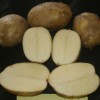 'Elkton' is a white-flesh potato variety suitable for chipping directly from the field. 'Elkton' was selected from the USDA-ARS breeding program in Beltsville, Maryland, by Dr. Haynes in 1997. In 2003, seed of 'Elkton' was made available for field evaluation under Florida growing conditions. In 19 trials conducted between 2003 and 2012, 'Elkton' yielded 111% in comparison with 'Atlantic'. In these trials, 'Elkton' demonstrated resistance to internal heat necrosis and hollow heart, which are common tuber physiological disorders under high-temperature growing conditions. This 3-page fact sheet was written by Lincoln Zotarelli, Douglas Gergela, Kathleen Haynes, and Dana Fourman, and published by the UF Department of Horticultural Sciences, April 2014.
'Elkton' is a white-flesh potato variety suitable for chipping directly from the field. 'Elkton' was selected from the USDA-ARS breeding program in Beltsville, Maryland, by Dr. Haynes in 1997. In 2003, seed of 'Elkton' was made available for field evaluation under Florida growing conditions. In 19 trials conducted between 2003 and 2012, 'Elkton' yielded 111% in comparison with 'Atlantic'. In these trials, 'Elkton' demonstrated resistance to internal heat necrosis and hollow heart, which are common tuber physiological disorders under high-temperature growing conditions. This 3-page fact sheet was written by Lincoln Zotarelli, Douglas Gergela, Kathleen Haynes, and Dana Fourman, and published by the UF Department of Horticultural Sciences, April 2014.
http://edis.ifas.ufl.edu/hs1237
2013 Evaluation of Non-Irrigated Early-Maturing Cotton Varieties in Jay, Florida
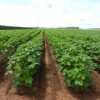 This report includes a summary of the 2013 early-season cotton Official Variety Trial in Jay, Florida. It shows the performance of 11 cotton varieties. This data represents only one year and one location, and readers are cautioned that test results should be considered over several locations and years before final conclusions are valid. This 5-page fact sheet was written by Darcy Telenko and Michael Donahoe , and published by the UF Department of Agronomy, January 2014.
This report includes a summary of the 2013 early-season cotton Official Variety Trial in Jay, Florida. It shows the performance of 11 cotton varieties. This data represents only one year and one location, and readers are cautioned that test results should be considered over several locations and years before final conclusions are valid. This 5-page fact sheet was written by Darcy Telenko and Michael Donahoe , and published by the UF Department of Agronomy, January 2014.
http://edis.ifas.ufl.edu/ag378
Effect of Fertilizer Phosphorus Rate of Tomato and Green Bean Yield and Growth in High pH Sandy Soils of South Florida
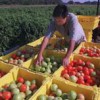 This 4-page fact sheet addresses the effect of phosphorus rate on tomato and green bean yield and growth in high pH soils and discusses their relationship to both nutrition and fertilizer management. Written by Kelly T. Morgan and Kamal Mahmoud, and published by the UF Department of Soil and Water Science, December 2013.
This 4-page fact sheet addresses the effect of phosphorus rate on tomato and green bean yield and growth in high pH soils and discusses their relationship to both nutrition and fertilizer management. Written by Kelly T. Morgan and Kamal Mahmoud, and published by the UF Department of Soil and Water Science, December 2013.
http://edis.ifas.ufl.edu/ss611
Effect of Reduced Soil pH with Sulfur on Available Soil Phosphorus in High pH Sandy Soils of South Florida
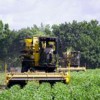 This 3-page fact sheet addresses the effect of moderating soil pH by using sulfur amendments in high pH soils and discusses their relationship to both nutrition and fertilizer management. Written by Kelly T. Morgan and Kamal Mahmoud, and published by the UF Department of Soil and Water Science, December 2013.
This 3-page fact sheet addresses the effect of moderating soil pH by using sulfur amendments in high pH soils and discusses their relationship to both nutrition and fertilizer management. Written by Kelly T. Morgan and Kamal Mahmoud, and published by the UF Department of Soil and Water Science, December 2013.
http://edis.ifas.ufl.edu/ss612